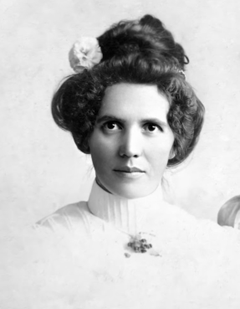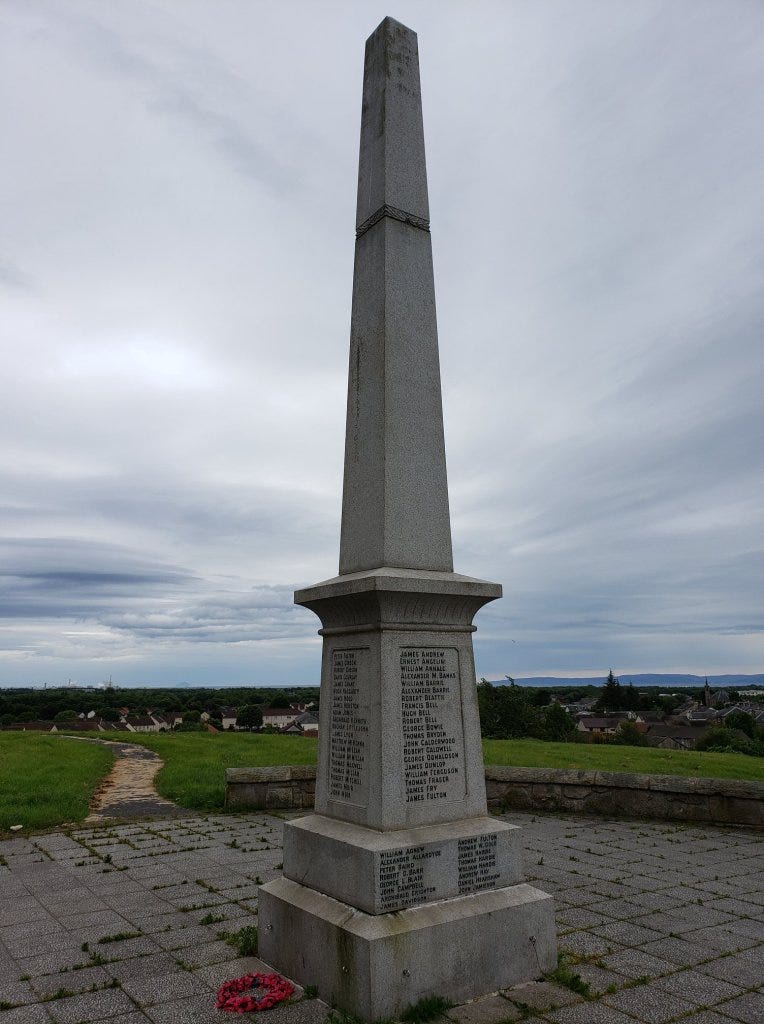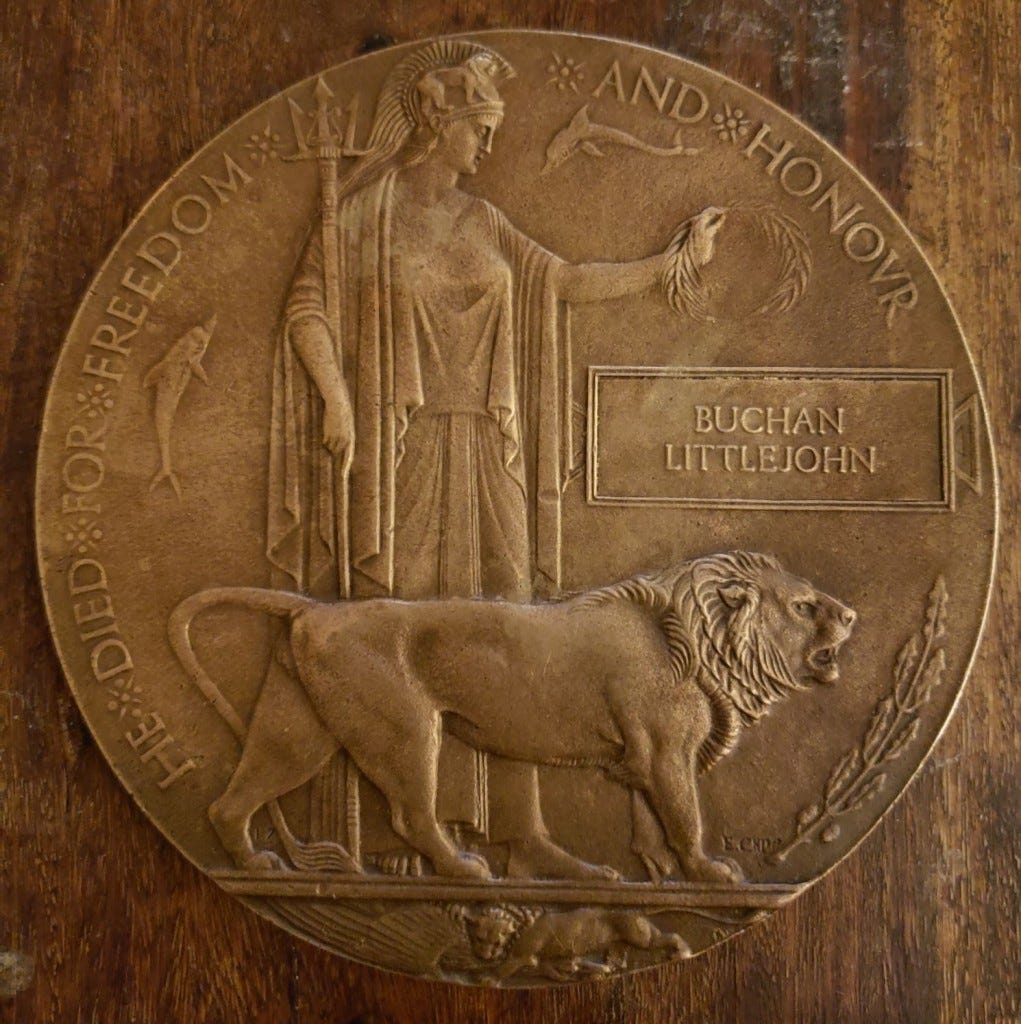Here’s a sneak peek into Castle Gate, including the front material and a few free chapters.
Peter Garroch’s family in the aftermath
(If you would like to share your family’s Castle Gate story, please fill in the form below.)
Shared with permission by Peggy Lanier
Note from Lisa Bonnice, author of Castle Gate:
Peggy Lanier is Pete Garroch’s only grandchild. His daughter Annie was Peggy’s mother, and Peggy was named after his other daughter. This makes Peggy Lanier my second cousin, once removed.We’d never met nor communicated until Castle Gate was nearing publication, so I didn’t have her input during the writing of Pete and Jessie’s story. That makes it even more fascinating to read Peggy’s stories about her family’s experience after the disaster.
Peggy was born many years after the explosion, so she never knew Pete. But she knew his widow, Jessie, who was her grandmother:
I heard rumors of Jessie reading tea leaves. Jessie always acted like Pete was a saint who never drank or swore! My dad used to point out that it probably wasn’t true. I went to Jessie’s funeral in 1980 and everyone there was drinking and dancing. What a party!
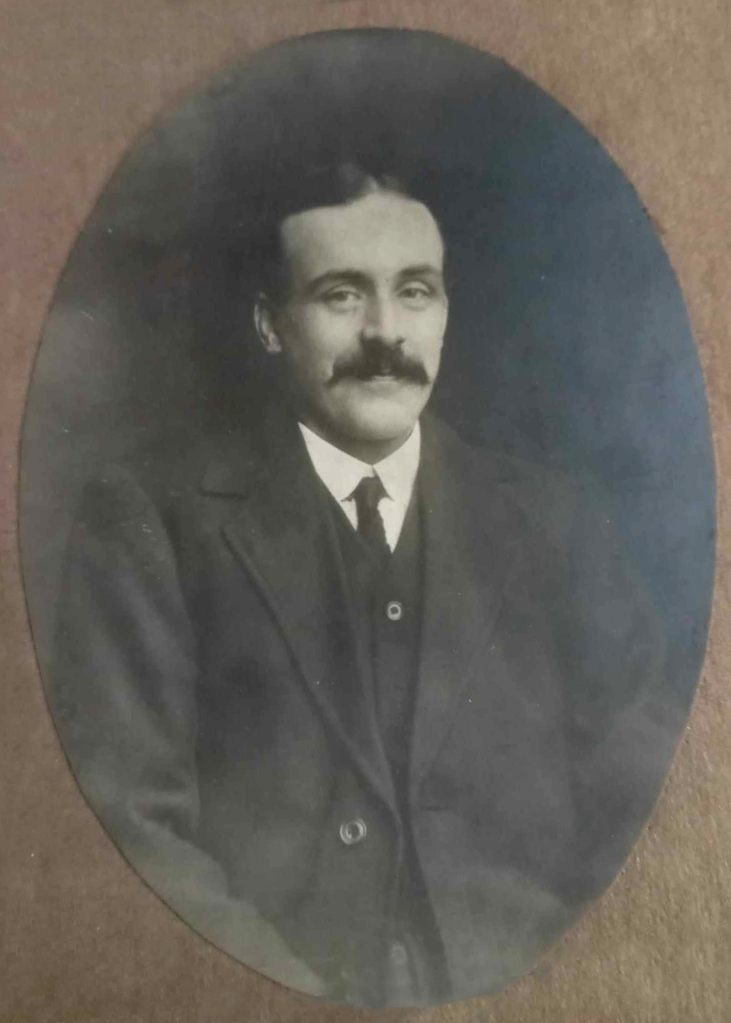
In this photo of Pete, he looks like he has a quick wit, a touch of sarcasm, perhaps. I only knew him from that picture, now I realize how tough he was. I wonder if it was Jessie who got him to smile? Peter was regarded with reverence in our family as in beloved husband and father.
My mom and I went to West Virginia to visit her and Aunt Peggy every other summer or she came to California to visit us and her sister, Elizabeth, in Santa Monica. She baked without measuring anything and my mom would try to figure out how she did it, but it would never turn out the same when we tried to make it.
I have old home movies of Jessie dancing the Highland Fling. I remember her being very optimistic and laughing a lot. When someone would ask her how she was, she always said “I can’t complain.”
Jessie was “hard of hearing” from having smallpox as a child, so her Scottish brogue stayed intact. My mom and Aunt Peggy lost theirs intentionally, like Willie (Willie Garroch, their cousin). My dad was upset one year, when I was about two years old, because after returning from visiting Jessie, I spoke with a thick brogue, or so the story goes. The neighborhood where I grew up had several Scottish families as well.

Annie (Peggy Lanier’s mother) and Jessie Garroch
This photo of Jessie and her daughters was taken by a photographer for a local magazine in Utah about surviving families of the mining disaster. My mom looks to be about 9 or 10, so 1926 sounds about right.
My mother died in 1982 in a hospital in West Virginia where she had gone to stay with Aunt Peg after my dad died in 1981. I left my children in southern California to be at her bedside. I was 29 years old at the time.
One morning, we got a call from the hospital stating that my mom had taken a turn for the worse. We rushed to the hospital and were surprised to find that my mom was more lucid and energetic than she had been. Mom told us about a visitor she had had the night before.
Aunt Peg and I looked at each other suspiciously because we knew that we had left after visiting hours were over the night before. I didn’t know what she was talking about but then Peg and I went to have a cup of coffee and Aunt Peg told me she had seen someone named “Auntie Mame” (I think).
The story was a wealthy Mormon family wanted to adopt Aunt Peg and my mom after the mining explosion, but Jessie refused. According to Aunt Peggy, Auntie Mame was the woman who wanted to adopt them, who had been dead for years.
Aunt Peg said there was no way my mom could remember her, so we assumed that she was helping her to pass to the other side. A few days later I sat by the bed and watched my mom pass away … she saw her mother (Jessie) who had just died a year and a half before and exclaimed “Mother!” as she looked up through the ceiling.
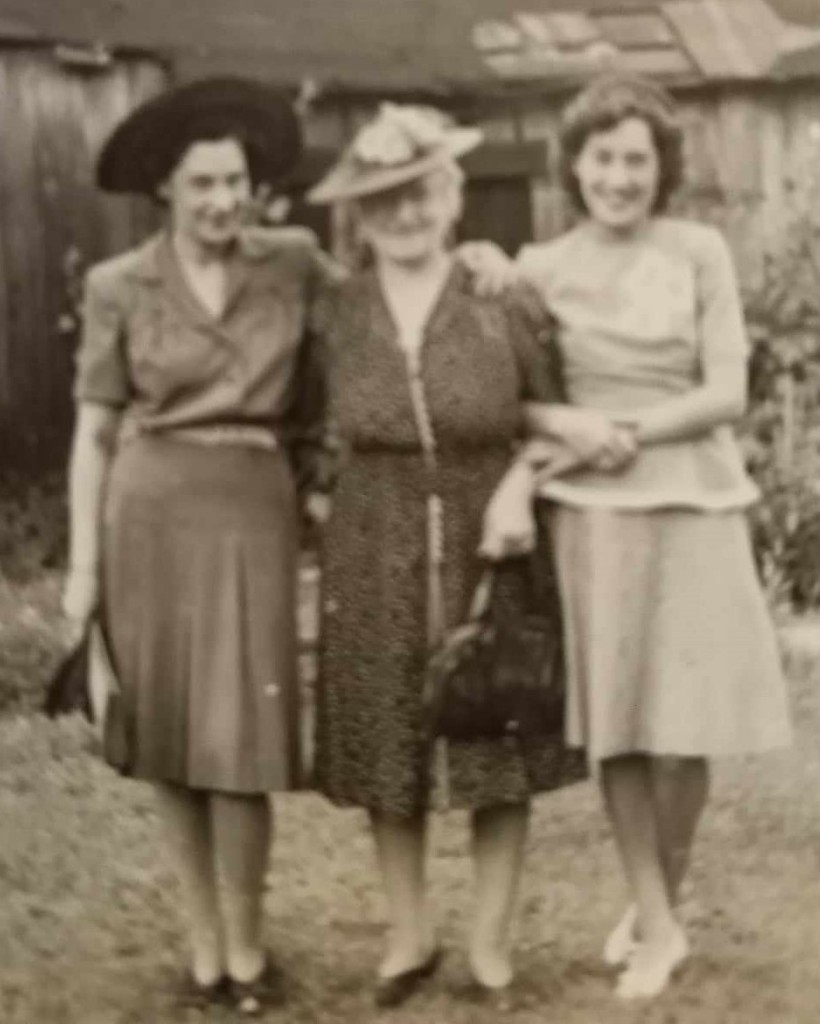
with their mother Jessie Garroch
I know you like these kind of stories so I wanted to tell you since it pertains to Utah and the mining explosion. I’m glad I’m getting to know more about the other side of the family, thanks to you! I enjoyed your book so much and I look forward to the rest of the trilogy.
If you would like to share your family’s Castle Gate story …
… please fill in the form below. Be sure to include your email address so we can get back to you for more information.
The Smith brothers and Irving Bodily
(If you would like to share your family’s Castle Gate story, please fill in the form below.)
Shared with permission by Kimberly Nelson Savage
This is Kate (Katrina Birgitta Sonberg) Smith, mother of Henry “Eugene“, Orin Clifford, Florence Karen, Gladys (Gloria) Marie and Flossie Smith. Kate had lost her husband Prince Henry Smith in 1922 from the effects of the mine. On March 8, 1924 she lost her two sons and son-in-law, Florence’s husband Joseph “Irving” Bodily in the Castle Gate Mine Disaster. She ran a boarding house with her daughters, Florence and Gladys Smith, in Castle Gate.
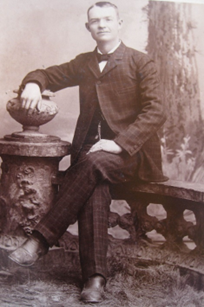
Henry Eugene Smith

My great grandfather Henry “Eugene” Smith was the 43rd body found and his occupation was listed as “driver”. Many documents listed Eugene as a “Driver” a “Hoist man” and “Teamster”.
Eugene and his brother Orin’s bodies were found in Mine #2 near the entrance to the 7th right dip.
The brothers must have been very badly gassed and burned as they were not identified until days later. Eugene was identified on March 13 by the darning on his sock. Eugene and Orin are buried in Spring Glen, several miles from Helper.
Eugene was married to Ardith Barney. Ardith and Eugene had a 6-year-old daughter Valgene, 3-year-old Kenneth Orin and they were expecting a third boy, Hylon, who was born two months after the accident.
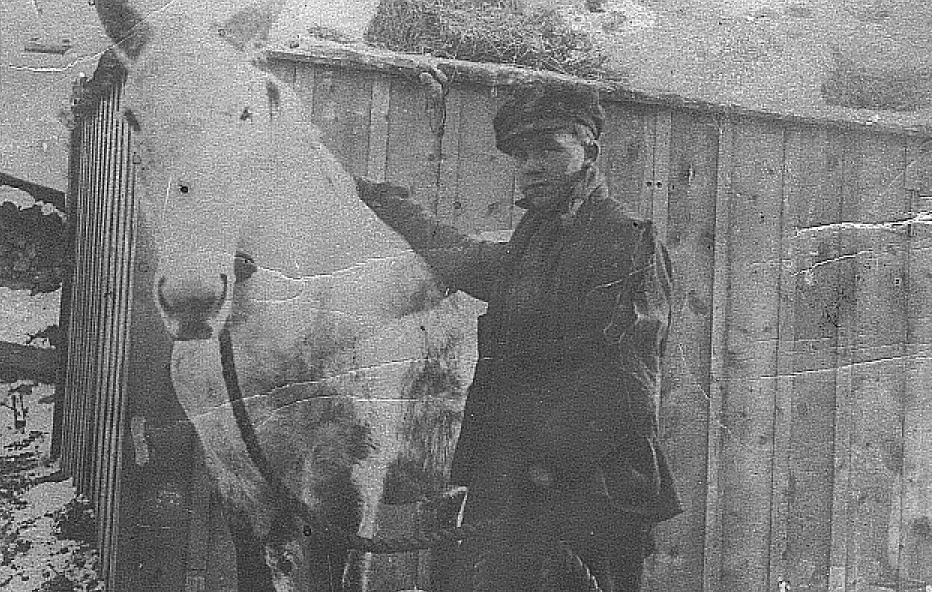

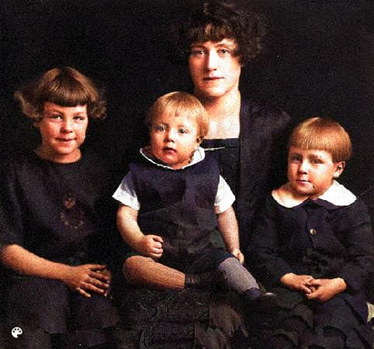
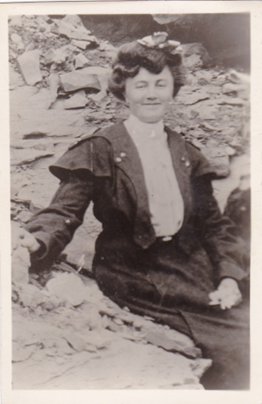
Elizabeth Barney, Ardith’s mother, wrote a poem that was sent out to all the widows and their families after the Castle Gate Mine Explosion. Below is the poem and the information about how they distributed the poem to all the families. (The “shepherd” in verse five refers to the bishop of Castle Gate Ward, Ben Thomas, who also died in the explosion on his very first day working underground.)
We’ll Meet on the Other Side
Dear mothers and wives, little children and all,
My heart fills with sorrow for you.
In the loss of your husbands, fathers and sons,
Your burden is heavy, it’s true.
In the depths of the mine, where the sun cannot shine,
A tiny light leading the way
Thru black, looming coal, stretching veins far and wide,
Near two-hundred entered that day.
After leaving their loved ones at the break of day
With light heart and cheery goodbye,
They entered the man-trip and sped to their rooms
Little dreaming that death was nigh.
There’s scarcely a city or town in our state,
Or village in a foreign land,
But lost some companion, a loved one or friend
By that sacred love-tying band.
Not alone did they enter the portals of death,
But were joined by a shepherd bold
Who will pilot the way on the journey,
Till each joins the heavenly fold.
God is no respecter of his children dear,
Though we’re not all made just alike;
Death deals to each one a terrible blow
And we know not where it will strike.
He enters the humblest and lowliest hut,
As well as the grand mansions wide.
Takes parents, a youth, or a sweet, laughing babe
And oft’times, a young, blushing bride.
He sails on the water, he rides on the storm,
Brings sorrow to every land.
Only God, kind merciful Father of all
Can e’er stay his powerful hand.
Our prayers are now with you for comfort and peace;
Our flag still waves loyal and true.
Dark storm clouds that gather will soon go away;
Our Father is mindful of you.
Clawson, Emery County, Utah—8 March 1924

Elzada Barney Tatton, Ardith’s sister was living in Cameron/Rolapp/ Royal at the time of the explosion. She wrote in her journal about Ardith and Eugene. While the number of men are not correct, as they did not know the exact numbers yet, her husband Lee Tatton (brother-in-law to Henry Eugene Smith) was trained and went to be on the rescue team.

Orin Clifford Smith
Orin and his brother Eugene’s bodies were found in Mine #2 near the entrance to the 7th right dip. Orin was the 45th body found and his occupation was listed as “miner”.
He was in the morgue for several days before they could figure out who he was. My great aunt Gloria said they identified her brother Orin by his gold tooth.
Joseph Irving Bodily
Eugene and Orin’s brother-in-law was Joseph “Irving” Bodily, married to their sister Florence. Irving was the 115th body found toward the end of the 6th Right Dip, and his occupation was listed as “miner”. He was brought out at 11pm on the 11th of March. His body was shipped to Vernal on the 13th and his funeral was held Sunday, March 16 at 3pm.

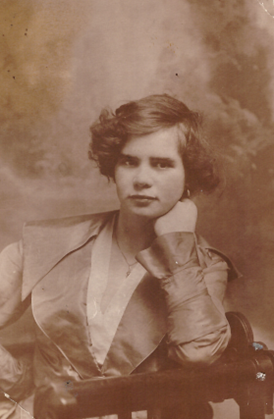
In later years, the only one that was left and lived long enough to talk about things was Gloria Smith, Orin and Eugene’s sister. She was in her 90s and she never would talk about it. We visited her and the TV was on and they were talking about the Crandall mine and the men that were trapped.
This is the only time she talked about how her brothers were found and identified, she would never talk about anything else. I believe it was too traumatic for her as she was 16. Her father had died two years before and then her brothers and her brother-in-law were all lost in one day. There were no more men in the family.
If you would like to share your family’s Castle Gate story …
… please fill in the form below. Be sure to include your email address so we can get back to you for more information.
My century-old copy of NYT on display in museum
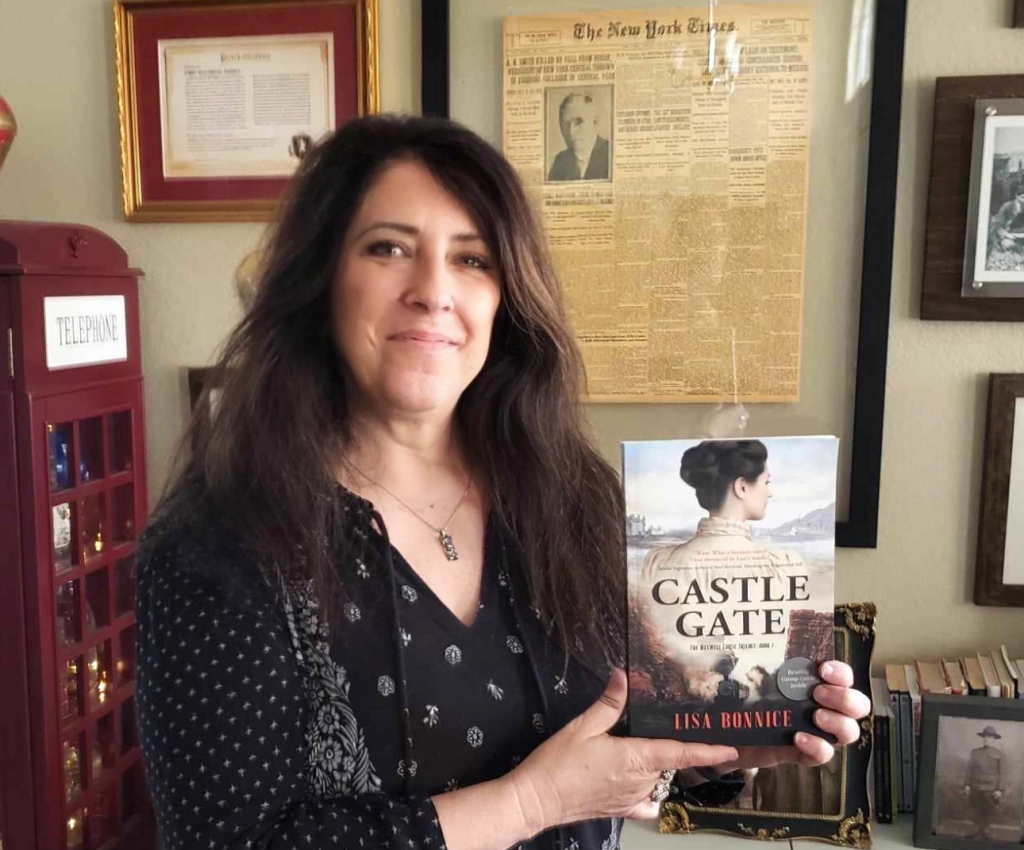
In commemoration of the one-hundred-year anniversary of the Castle Gate Mine Disaster, the Western Mining and Railroad Museum in Helper, Utah will display a copy of the New York Times’ March 9, 1924, front-page reporting on the mine disaster, which I donated to the museum in 2021.
On March 8, 1924, over 170 men were killed in Castle Gate, Utah in one of the most devastating coalmine disasters in American history. Three of those men killed were my ancestors from one branch of my family tree. Another branch included the men who ran the mine.
The story was so big that it was covered by international news outlets. The antique newspaper on display this March was purchased by me in 2021 during the writing of Castle Gate, as part of my genealogy research. I soon donated it to the museum due to the fragile state of the relic. I didn’t have the expertise to preserve something like this … it would have ended up in a drawer or box instead of receiving the care it deserved.
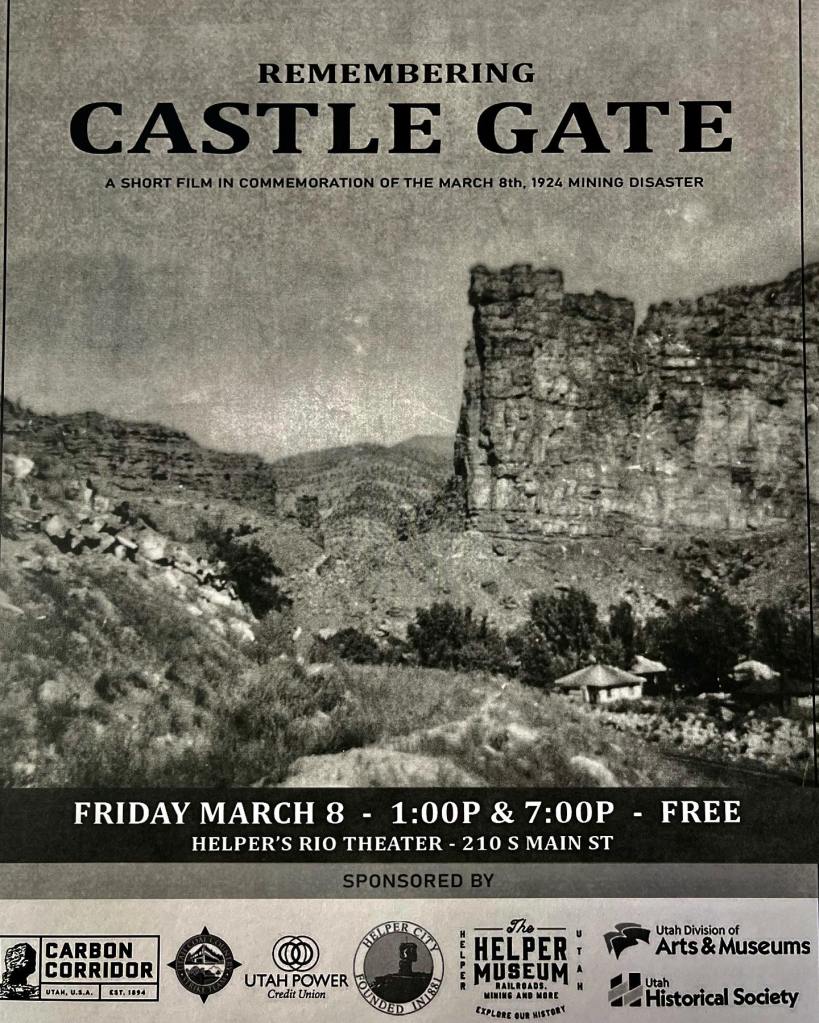
Castle Gate is now a ghost town—the only things remaining are the cemetery where many of the miners are buried and the barred entrance to Mine #2, where the explosion occurred. (See images in The Gallery)
The Helper Museum will be displaying the newspaper during their centenary commemoration of the Castle Gate Mine Disaster on March 8, 2024. That same day, next door at the Rio Theater (owned by Historic Helper City), a short documentary called Remembering Castle Gate will premiere.
I was interviewed at my home here in Phoenix last January to be featured in the documentary and be will present at the premiere, signing copies of Castle Gate. Additionally, and more importantly, I’ll be visiting and honoring the site where this horrific event occurred 100 years ago, changing the lives of so many people … including my family.
Based on years of exhaustive genealogical research, Castle Gate tells the story of a coal mining town shattered on that fateful day in 1924, and the Littlejohn and Garroch families who ran the mine and worked underground. Lisa Bonnice is a descendant of both families.
Castle Gate is filled with stories of those who lived and died that day, some of whom stayed home due to premonitions, and many more who ignored those warnings. It explores life in a rugged mining town during Prohibition, which was largely ignored … especially in nearby towns which were filled with saloons and brothels.
Lisa Bonnice is the author of Fear of Our Father, a best-selling true-crime novel which has been featured in television and radio programs in the US and the UK. She also authored a metaphysical comedy novel entitled The Poppet Master. A former associate producer for MSNBC.com, she is a popular program host with The Shift Network, hosting their annual Ancestral Healing Summit and Beyond the Veil Summit.
For more information, visit lisabonnice.com
Castle Gate is finally in print!

I’m excited to announce that the book I’ve been working on for so many years is finally available with a publication date of November 30, 2023.
Castle Gate is the true and tragic saga of a Scottish family whose dreams of finding their fortunes in the bountiful coal mines of Castle Gate, Utah, during the Prohibition era explode in one of the most devastating mine disasters in American history. Is their presence there just bad luck, or is it due to a generational curse dating back to their ancestors’ involvement in a grisly witchcraft trial in the 1600s?
Based on extensive genealogical research, Castle Gate tells the story of one family destroyed by a documented curse which has been wreaking havoc in countless lives, all over the world, for centuries.
Lost WWI memorial plaque returned to family after 50 years …
a Veteran’s Day acknowledgment of honors and miracles
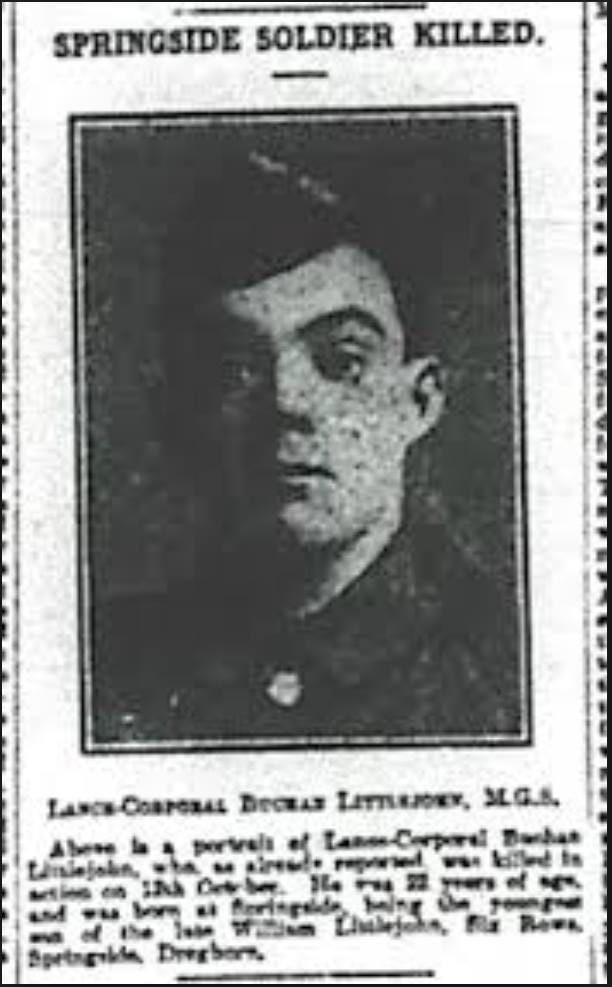
November 4, 1916
It’s 11/11, Veterans Day in the United States. Today is the celebration of Armistice Day, the end of WWI, and I’ve got a jaw-dropping story to tell about synchronicity, genealogy and an honored ancestor.
When my great-grandmother Helen was fourteen and living in Scotland, her mother died so Helen was pressed into service to raise her five younger siblings. Her wee brother, Buchan, was four at the time and Helen became his second mother.
When Buchan was 20, he enlisted with the Royal Scots Fusiliers immediately after WWI was declared. He was sent as a Private to France where he was wounded and sent home in July 1915. He spent eight months convalescing before being sent back to France in March 1916 as a Lance Corporal.
Buchan was killed at age 22 in an attack on Bayonet Trench, during the Battle of Le Transloy at the Somme, October 12, 1916 and eventually buried at the A.I.F. Burial Ground in France.
As both parents had died by that time, Helen was listed as his next of kin on his military records. The military dispersed Buchan’s belongings to her and their other siblings.
I knew all of this because I’d been researching my Scottish grandfather’s family. One day, I found a message in my Ancestry.com inbox from someone named Rita, asking if anyone in my family had ever lived in Tacoma, Washington. She and her husband Roger had found something on their property there, when building their house fifty years ago, and had always wondered how it got there. With the advancements in technology, she was finally able to track it down, and my Ancestry account had more information on Buchan than anyone else.
What Rita and Roger had found was a Next of Kin Memorial Plaque (also known as a Dead Man’s Penny) with Buchan’s name on it. The challenge now was to figure out how it got all the way to the west coast of the United States, with some good old fashioned genealogy research.
Turns out that Helen received the plaque, as next of kin, in 1919 when they were awarded by King George. She brought it with her from Scotland to Utah in 1922, where her family settled in the coal mining town of Castle Gate. Three of her older brothers (Bill, John and Geordie) lived there.
Helen died shortly after arriving in the States and her husband Will Garroch was killed six months later in the Castle Gate mine disaster, leaving their kids orphaned. Their children all eventually ended up in Michigan. None ever lived in Washington state.
I chased down all sorts of loose threads on Ancestry.com. Finally, a breakthrough happened when Ancestry popped up one of their famous “green leaf” hints. I discovered that Helen’s niece settled in Tacoma. This niece, I assume, took possession of the plaque after her father died (Helen’s older brother and “head of the family”).
This niece and her husband owned the property adjacent to Rita and Roger’s new land but it took genealogy research to connect her maiden name to anyone there. As the niece had no children, the ancestral lineage stopped there, so Rita kindly sent the plaque to me and it hangs in a place of honor in my home.
The first time I held the plaque in my hands, knowing that it belonged to my great-grandmother Helen—about whom I’ve written extensively in my new book Castle Gate—I swear I felt a ripple in time as I ran my fingers over Buchan’s engraved name. I’m quite sure Grandma Helen did the exact same thing, more than once.
Thank you, Rita and Roger, for helping to close the circle and bring Buchan’s memorial plaque back into the family, where he is absolutely remembered and honored.
Celebrations of birth and death, all in one day
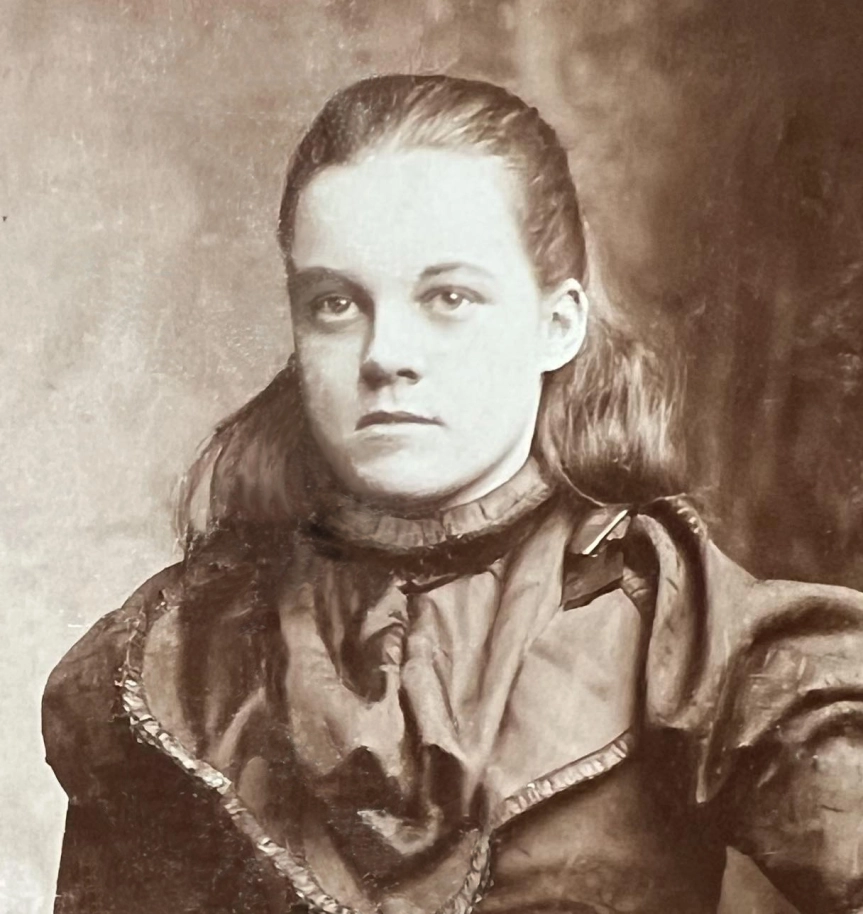
Today is August 30, 2023.
On August 30, 1923, 100 years ago today, Helen Garroch was laid to rest in the Castle Gate Cemetery. She was only 38. (In this photo she was approximately 14 years old.)
Also 100 years ago today, it was Helen’s only son’s 18th birthday. In the coal mining town of Castle Gate, Utah there was a rite-of-passage tradition on a young man’s 18th birthday. His task was to go to the nearby town of Helper and start drinking at the first saloon on Main Street. He was challenged to make it to the end of the row of saloons still sober enough to hire some female companionship at one of the many brothels there in town.
Helen’s son Willie, who eventually became my grandfather — instead of celebrating his adulthood with his pals — attended his young mother’s funeral. The family had only emigrated from Scotland a couple years ago and Willie’s heart still ached for his homeland. Now he had lost one of his ties to home, his beloved mom.
Willie didn’t know that, less than a year later, he would also lose his father in one of the biggest coal mine disasters in American history.
You can read the rest of their story in the book Castle Gate, which will be available on November 30, 2023 (the author’s birthday). Sign up here on this page to be notified when it’s available for pre-order.
Castle Gate — the book … in print on November 30, 2023
Castle Gate, by Lisa Bonnice, is Book 1 in the Maxwell Curse Trilogy. It’s the true and tragic saga of the Garroch and Littlejohn families, related by marriage. The Littlejohn family is descended from a lineage that was cursed during a witch trial in 1600s Scotland, but they are unaware of it. The Garrochs are just unfortunate enough to have married into this nightmare.
The curse assures that the descendants of the accusers — who caused five souls to be arrested, tried and executed — suffer as the accused suffered. That includes having their families torn apart, watching helplessly as their loved ones struggle, or even horrific death by fire.
Book 1, Castle Gate, uses robust and extensive genealogical research to tell the tale of the families who emigrate to the United States from Scotland during the WWI and Prohibition eras, only to have the curse follow them there. The Littlejohns and Garrochs, and over a hundred others, are devastated by one of the biggest mine explosions in American history — the Castle Gate Mine Disaster of 1924 — where families are torn apart and almost two hundred men die by fire in a mine that the Littlejohns run.
Book 2, A Curse by Fire ,will tell the story of the witch trial and the origin of the curse. Book 3, Kind Miss, will wrap it up in modern-day America where the curse is discovered and dismantled by descendants of the original accusers.

